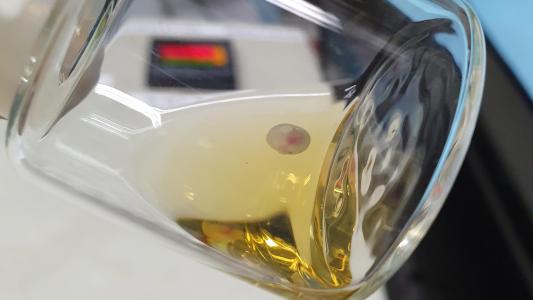The first step has been taken towards Poison Ivy‘s plant domination dreams: researchers in Singapore have designed a device for communicating with plants.
Well, sort of.
The team at Nanyang Technological University, Singapore (NTU Singapore) took advantage of the electrical pulses that plants emit. By attaching a small electrode to the plant, they could both register those signals and send signals back — something akin to plant communication.
What Do Plants “Know”?
Playing around with plants’ electrical signals could open up multiple possibilities, the team contends: they could be monitored and analyzed to gain insight into what’s going on with the plant before health problems develop, while signals could potentially be sent to the plant to help it fight back.
“Climate change is threatening food security around the world. By monitoring the plants’ electrical signals, we may be able to detect possible distress signals and abnormalities,” Chen Xiaodong, chair professor in Materials Science and Engineering at NTU Singapore said in a statement.
“When used for agriculture purpose, farmers may find out when a disease is in progress, even before full‑blown symptoms appear on the crops, such as yellowed leaves.”
Leveraging that hidden knowledge could mean healthier crops, leading to better yields.
Of course, it’s important not to fall into the trap of thinking of plant communication as anthropomorphic — and thus misunderstanding it.
“A big mistake people make is speaking as if plants ‘know’ what they’re doing,” University of Washington botanist Elizabeth Van Volkenburgh told Scientific American. “Biology teachers, researchers, students and lay people all make the same mistake. I’d much rather say a plant senses and responds, rather than the plant ‘knows.'”
To detect those sense-and-respond signals, the researchers developed a small, light electrode, inspired by the ones used to take echocardiograms. They stuck it to the surface of a venus flytrap’s leaves with hydrogel (no easy feat, considering the hairy/waxy/irregular surface of the plants isn’t an ideal one).
When the tiny electrode, with a diameter of 3 millimeters, was attached to the venus flytrap, it successfully registered the bug-killer’s electrical signals.
Plant Robots?
But “plant communication” isn’t a one way street; we should be able to send pulses, too.
Using a smartphone, the researchers did just that, sending a pulse to the fly trap that caused it to snap its leaves shut on command — a blink-and-you’ll-miss-it marvel of evolution (which drove the great taxonomist Linneaus up a wall).
By attaching the fly trap to a robotic arm, the team made a plant/robot hybrid that was capable of picking up a tiny length of wire using the trap leaves and their long, delicate “finger” extensions.
Plants are inherently modular, taking a wide array of shapes, forms, and abilities, and “they can be isolated and installed on a variety of platforms,” the team writes in their paper, published in Nature Electronics.
“Integrated with current soft electronics or plant-based electronics, such modularity could potentially be used to build various plant-based robots, sensors, memristors, ionic circuits and plant healthcare devices.”
Or, you know, maybe steal the world’s largest diamond from the Gotham Museum of Natural History.
Don’t rat me out, readers, because my venus flytrap is getting pretty big …
We’d love to hear from you! If you have a comment about this article or if you have a tip for a future Freethink story, please email us at [email protected].






